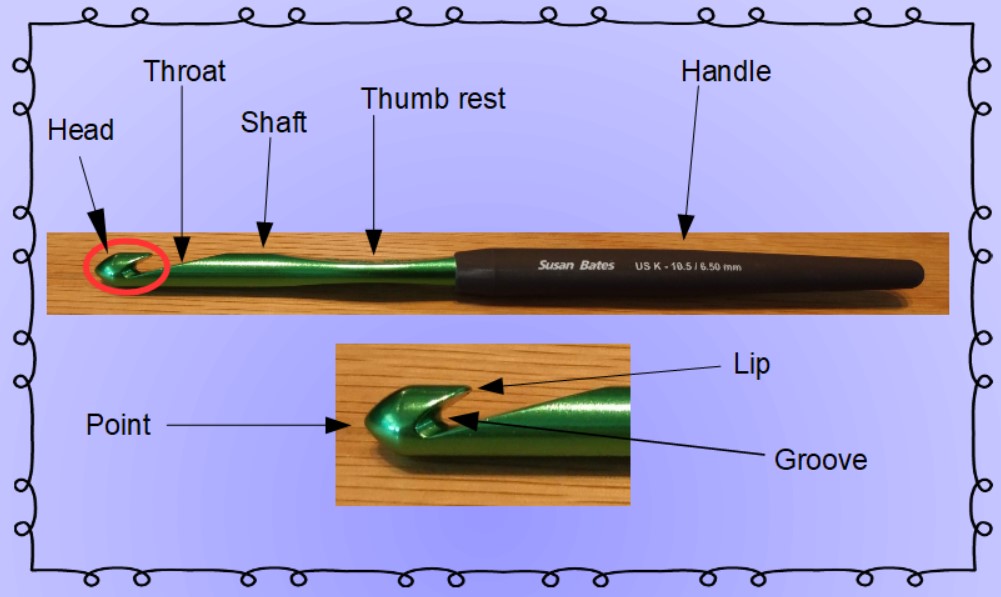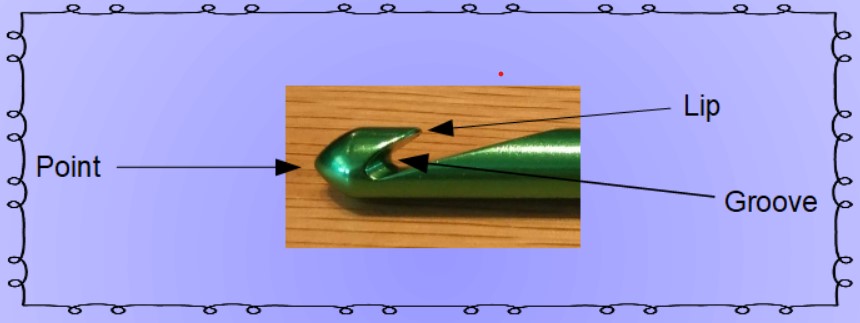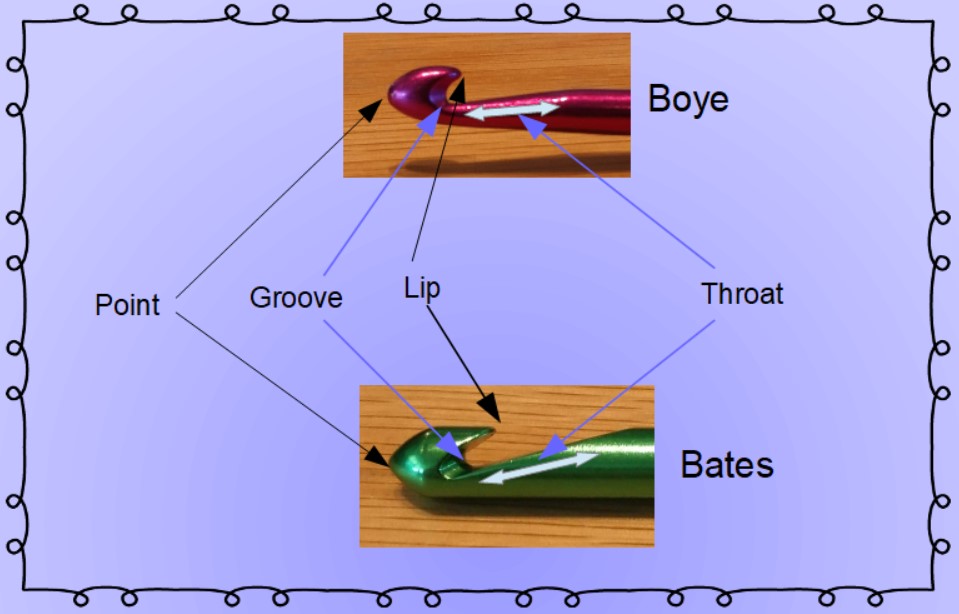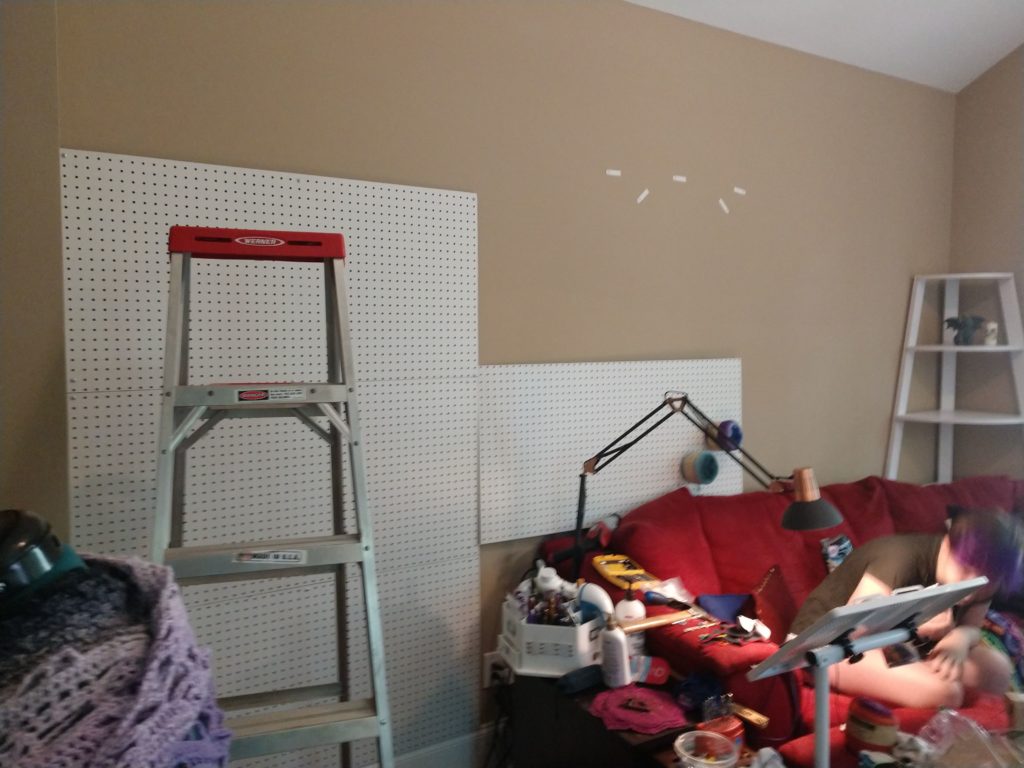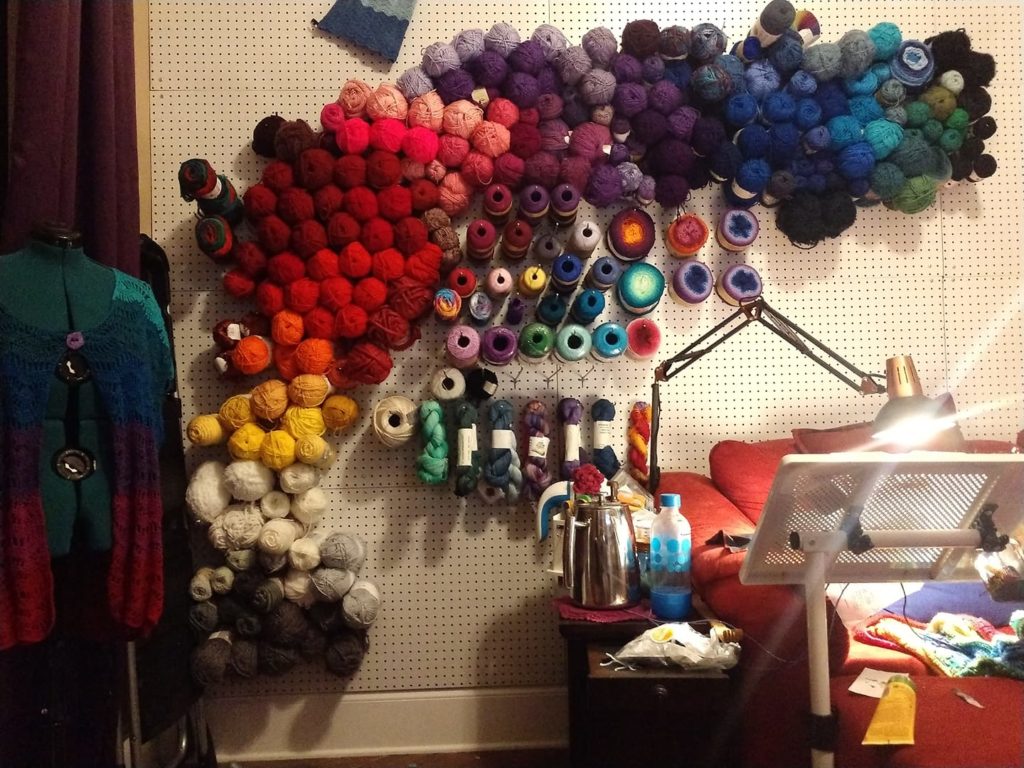My Work Station
As a crochet designer or just a maker of any variety, our work area is very important. You might be sitting for a long time, so it must be comfortable. You might (like me) use a lot of different tools for your crafts so you need lots of storage. If you’re following a pattern, you need a place to read that pattern that isn’t in the way of your work, is close enough to see and can accommodate a variety of reading materials. If you’re writing a pattern, you also need a writing surface.
I spent a lot of time creating the perfect work station for me, and I think I’ve nailed it. It all centers around my adjustable table.

It’s a handy computer desk that I can adjust to different heights. The base sits under my ottoman and I keep the table in front of me and to the right as I work. The best part of it? It’s magnetic! I had no idea how important that would be until I started using it. It is seriously my favorite feature.
Here’s a close up of the surface as I use it.

That’s a lot of stuff! But, it’s all at hand’s reach and I can manage each thing pretty much with only one hand. The magnets are the key to making it work so well.
- Push Pin Magnets Love these! They look like push pins, but they’re magnets. Pretty self explanatory, lol.
- Pop Socket Phone Holder Makes it easy to tilt my phone for various reasons and keeps it out of the way.
- Burt’s Bees Lip Balm I happen to live very close to the Burt’s Bees home office, so it’s near and dear to my heart.
- My ceiling fan remote! Isn’t it easy to lose those things? So much easier to keep track of now and always at hand’s reach.
- Locking Stitch Markers I cannot have too many of these. I lose them constantly. So I keep this box full and my backups are stored in a drawer nearby.
- TV Remote – I stuck a magnet on the back of this so it just snaps into place and I never lose it anymore!
- Cuticle Cream What is more annoying than a hangnail when you’re crocheting, right?
- Composition Notebook I buy these at back to school time when they’re super cheap. I keep a few dozen hand to last through the year.
- USB C Phone charger, and there’s a white micro USB Charger on hand for older devices. My Kindle for example.
- Tape Measure
- Embroidery Scissors I like these because they come with extra point guards so the pair I keep in my bag doesn’t stab me.
- Bent Tip Needles I talk about why I like these in this post. http://carochetdesigns.com/sewing-in-ends/
- Nail File I’m a bit of a nail fanatic. I like my nails to be pretty, but I really hate when they snag yarn. So, I have tons of these!
- Pencil Cup – built in and holds my crochet hook when not in use so it doesn’t slip between the couch cushions
- Tweezers A good pair of tweezers will last forever. I used to be a professional hairdresser (before having kids) and I’ve had this pair for over 20 years. They help with fiddly little bits like nothing else.
- Pocket Knife I swear by this thing. I have two of these. I thought I’d lost one so I bought a second because it’s indispensible. We were in the middle of a major move, though, and it turned up about a year later. I keep one on my key ring and my spare on my work station. I’ve been known to give these as gifts because it almost always comes out at crochet nights.
- Miscellaneous other papers – this one happens to be my daughter’s Starbucks work schedule for next week, but this could be a pattern, notes from a previous project, a yarn label, anything!
That’s a whole heck of a lot of stuff to manage and it’s all in one place. If you don’t have a magnet board near your work area, I’d highly recommend one! I have a couple dozen of these magnets scattered around ready to be stuck to non magnetic things or grab whatever loose items I might have.

How do you keep your work area organized?




